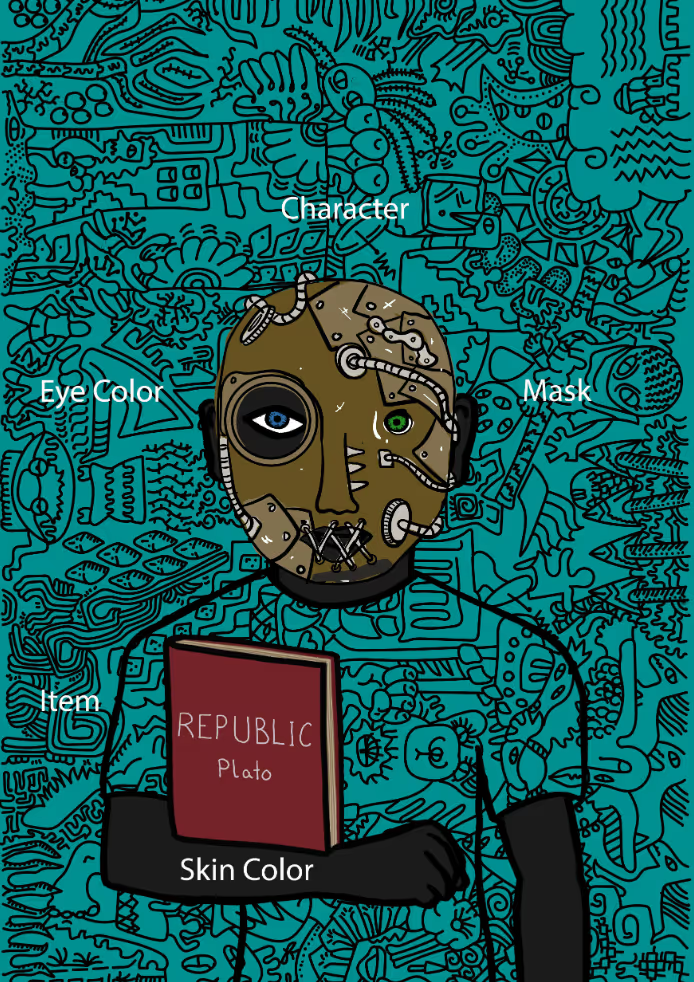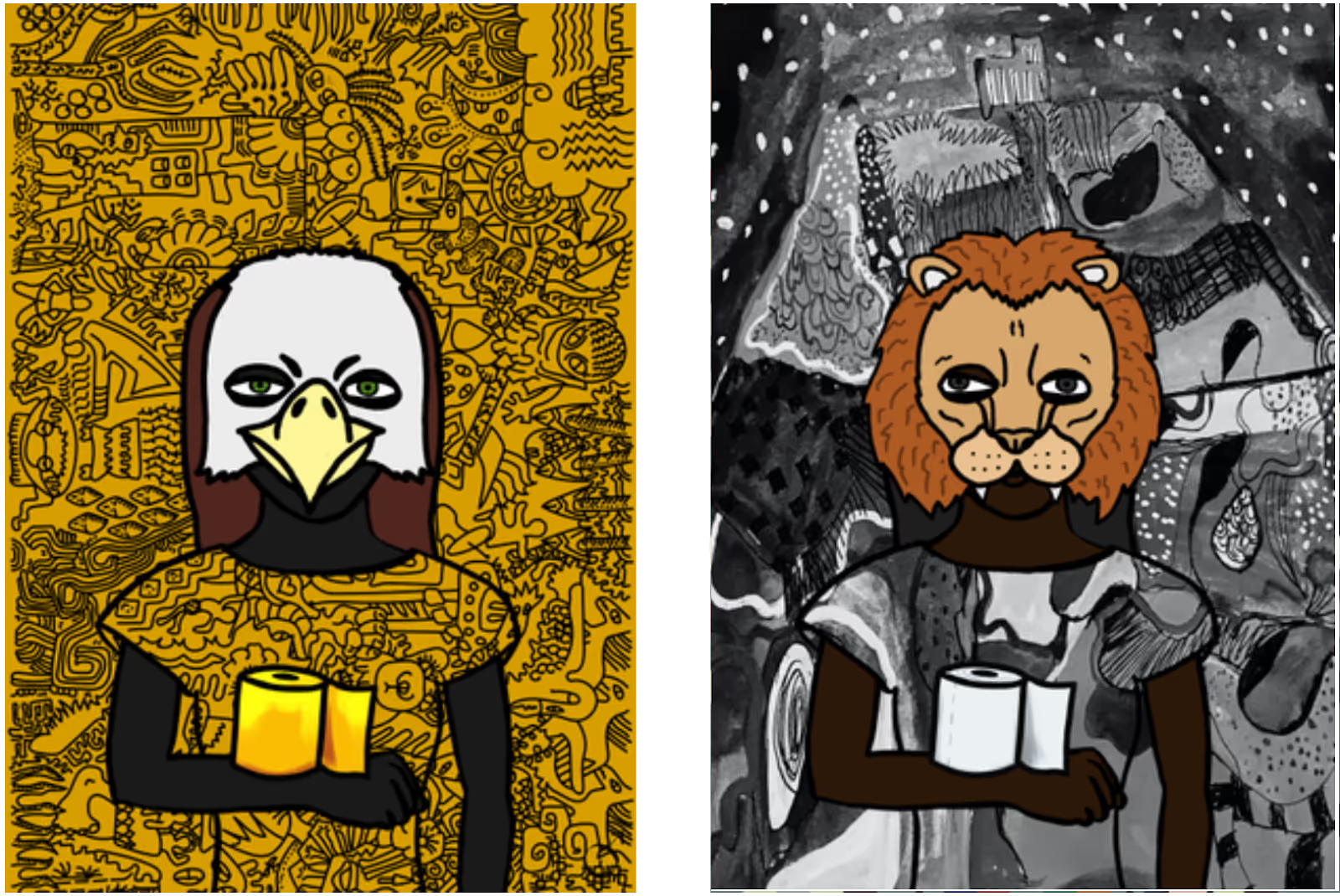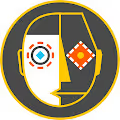
Hashmasks is a living digital art collectible. It is a collection of 16,384 unique digital portraits. Brought to you by Suum Cuique Labs from Zug, Switzerland.
By holding the artwork, you accumulate the NCT token on a daily basis, which allows you to choose a name for your portrait on the Ethereum blockchain. This is your opportunity to be among the first to participate in one of the largest collaborative NFT art projects in existence.

To give general guidance on the hierarchy for the digital collectible art piece, the creators provide a set of explicit characteristics with differing degrees of rarity, e.g. men are much more common than robots. Unlike other collectibles, there is a second layer of scarcity imposed on top of the explicit traits via the implicit traits and the market for names.

Hashmasks are not a simple collectible, though, they are art. And art is not systematic. It is enigmatic. As the foremost blend of intelligently designed collectible items and artistic creation, many Hashmask traits or attributes are not explicitly accounted for. It encourages the consumer or rather the collective consumer to project his or her interpretation of value into the artwork. On top of that, the NCTs pass on the decision power over the rarest of all traits, a unique name, to the consumer, thus, eradicating the invisible line separating the creator and the consumer of the artwork.


